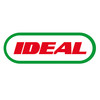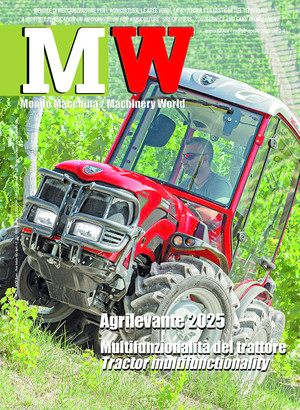
Safety and efficiency of the new Kverneland models
After the success of its new generation plows with the automatic self-reset system (2019), Kverneland relaunches soil tillage with the generation of Variomat plows equipped with new safety bolts. This solution makes it possible to work with up to a force of 5,000 kg on each single beam before cutting the safety bolt, without warping the beam under stress. The new design means that the safety bolt itself can be replaced quickly with the replacement bolts stored on the main body. The skimmers have also been revamped. According to Kverneland, the new generation 4P allows plowing in any soil conditions and with any type of residue thanks to the ability to modify the angle of the skimmer via two eccentric bolts. Moving the skimmer forward makes it possible to adapt the working speed according to the different soil and residue conditions. The 18" (45 cm), 20" (50 cm) and 22" (55 cm) smooth or serrated disc coulters round out the offering of fertilizer and corn skimmers, as well as crop residue blades. The Variomats are equipped with a new range of both mechanical and hydraulically controlled rear wheels applied to the frame, and are equipped with the Trailer Transport Solution (TTS) which allows for safe movement in narrow spaces and roundabouts, protecting the header from unnecessary stress during transport. In practice, the plow acts like a trailer towed by a tractor. The pivot point of the tractor-implement combination is located in the center and the risk of tipping over is practically zero. Although all the models in the new range have the same features, the 3500 B i-Plough – in particular – stands out for its Isobus functions. On this model the most important settings are made from the tractor cab and the driver can switch from in-furrow to out-of-furrow plowing with a simple touch. The 3500 B i-Plough also includes other features, such as FURROWcontrol for straight furrows that follow an A-B line, improving performance and comfort. Kverneland defines the Variomat as a simple and reliable system capable of finding the ideal mix between soil conditions, plow and tractor: when changing the working width it is not necessary to adjust the line of the first furrow and, thanks to the Variomat, the plow always works in a straight line. Moreover, the system makes it possible to maintain the width of the first furrow as it has been set in relation to the working width of the plow. There are four new models in the series (the 2300, 3300 and 3400 B Variomat plus the 3500 B i-Plough with complete Isobus control) and are structurally intended for high-power tractors, from 250 Hp for the 2300 B Variomat model to the 380 Hp of the top of the range.
Innovations are not lacking in another of Kverneland's key sectors, that of forage harvesting, where the Norwegian company is debuting the Densus, its new line of new variable chamber round balers. They are available in two models: the 7060 (bales up to 1.65 m) and the 7090 (bales up to 1.85 m). Each model offers three pick-up options to suit different crop conditions and applications: the effective and economical EasyFeed, the PowerFeed rotor and the ChopFeed with 15 protected individual knives. The Densus models are equipped with a 520 mm rotor, a 2.30 m pick-up and a new hydraulic system. Notable features include the integrated transmission unit, greasable external bearings, large rollers and simple, linear transmission. Kverneland points out that maintenance times are kept to a minimum thanks to the innovative design of the frame and driveline, the minimization of areas where crop can be deposited and options such as automatic greasing and work lights. The net binding system used is the proven PowerBind, with the net spool in the lowered position. The new vertical storage for spare net rolls reduces crop build-up and simplifies handling.
The first level of Kverneland Group’s Tim system has automated key driver tasks, such as pausing for tying and unloading the bales, reducing the baling sequence from ten manual operations to just two.








